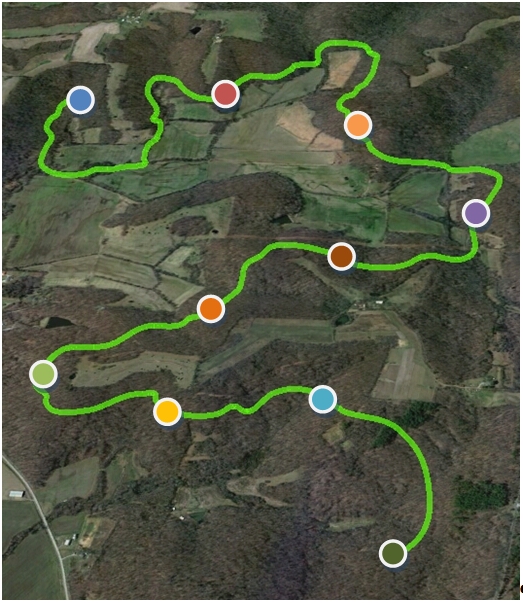Characterize Goals and Scope
STEP 1: CHARACTERIZE GOALS AND SCOPE OF THE CONNECTIVITY ASSESSMENT
Outcomes or Products
- Understanding of what species and/or systems are the focus of modeling
- Understanding of desired type of model results
- Understanding of how the model results will be applied
- Understanding of geographic area to be assessed
- Understanding of the time horizon under consideration if assessing in relation to a changing climate
Description
Defining the goals and scope is the first step in a connectivity assessment; in this step, you will develop an understanding of what your assessment is intended to accomplish and how it will be used.
Skill Sets or Expertise Needed
- General planning background
- Project development experience
How to Conduct This Step
When initiating a connectivity assessment project, it is important to clearly articulate what problem or question you’re trying to address, and for what purposes. Answering the following questions will help you evaluate which of the approaches, concepts, and modeling tools are best suited to address your needs. Addressing these questions may be approached any number of ways, including as a brainstorming exercise with key people who will be involved or will be using the results of the assessment, or by the person who will be leading the project. As the assessment gets underway, the team conducting the assessment may find it necessary to adjust the scope, based on project needs, data availability, and other factors.
- Are you assessing connectivity in the realms of land, sea, air, or fresh water?
- What is the primary feature of interest in your assessment - is it management of a place, or of one or more species or other ecological features?
- What is the overall goal of your connectivity assessment? What problem are you trying to solve?
- Are you evaluating connectivity to inform conservation or management priorities, or to mitigate or offset an infrastructure project?
- Do you need to understand connectivity across a broad region or within a localized project area?
- Are you trying to characterize places important for connectivity, or assess the impacts of anthropogenic activities or influences (e.g., development, climate change) on connectivity?
- Are you looking primarily at patterns of current connectivity, or connectivity in relation to projections of future changes, such as changes in development patterns, climate change, or other anthropogenic influences?
- Are you planning for climate change adaptation, and if so, over what time frame? Will you be trying to accommodate adaptation for the largest possible range shifts over the longest time frames or for a nearer term planning horizon?
- What type of connectivity are you trying to address?
- Are you looking at connectivity for one or more particular species (functional connectivity), or more broadly at general habitat connectivity or landscape permeability (structural connectivity)?
- If you are looking at connectivity for particular species, is it for an individual species or a group of species that can be treated similarly, or multiple individual species?
- Are you addressing all components of species connectivity (e.g., population connectivity, resource access, etc.) or just a single connectivity need such as a seasonal migration corridor? Are you addressing connectivity for day-to-day movements, juvenile dispersal, seasonal movements or migration?
- For climate adaptation, are you considering movement within a planning region to areas of refugia, or longer range in- and out-migration of species?
- Do the goals or planned uses of your connectivity assessment indicate the need to engage some broader group of partners or stakeholders, or will the assessment process be limited to a core assessment team?
- Will your assessment be used primarily within your organization, or is it intended to be useful to a range of partners and stakeholders?
It may be helpful to create a written summary documenting the goals of the assessment, the species or systems under consideration for assessment, what aspect of species connectivity you’re addressing, the geographic area to be assessed, and if appropriate, a preliminary identification of partners or stakeholders.
If you are trying to understand connectivity in the context of a changing climate, Cross et al. (2013) highly recommend considering sufficient geographic area and time horizon to understand the potential full impacts of climate change on your area or species of interest. They also note that likely all species will eventually need to move and while planning connectivity for all species individually is infeasible (Beier 2012), that reality needs to be considered while conceptualizing the project. Nunez et al. (2013) note that while all species likely need to move, if you focus on those that are very sensitive to anthropogenic barriers, you will likely address the species of both current and future connectivity priority.


